Frontispiece: Head and shoulders portrait believed to be that of
John Henry Otto of the 21st Wisconsin Infantry, Company D.
(Courtesy State Historical Society of Wisconsin)
2004 by The Kent State University Press, Kent, Ohio 44242
All rights reserved
Library of Congress Catalog Card Number 2004001312
ISBN 0-87338-799-6
Manufactured in the United States of America
08 07 06 05 04 5 4 3 2 1
Library of Congress Cataloging-in-Publication Data
Otto, John Henry, 18221908.
Memoirs of a Dutch mudsill : the war memories of John Henry Otto, Captain, Company D, 21st Regiment Wisconsin Volunteer Infantry / edited by David Gould and James B. Kennedy.
p. cm.
Includes bibliographical references and index.
ISBN 0-87338-799-6 (alk. paper)
1. Otto, John Henry, 18221908.
2. United States. Army. Wisconsin Infantry Regiment, 21st (18621865)
3. WisconsinHistoryCivil War, 18611865Personal narratives.
4. United StatesHistoryCivil War, 18611865Personal narratives.
5. United StatesHistoryCivil War, 18611865Campaigns.
6. United StatesHistoryCivil War, 18611865Participation, German American.
7. SoldiersWisconsinBiography.
8. German AmericansWisconsinBiography.
I. Gould, David, 1952 II. Kennedy, James B., 1932 III. Title.
E537.521st .o88 2004
973.7475092dc22 2004001312
British Library Cataloging-in-Publication data are available.

It is not unusual for an undertaking of this magnitude to be carried out collaboratively; however, this collaboration was unusual in that two individuals, thousands of miles apart, who had both undertaken the same project independently, agreed to cooperate and combine their efforts in a joint project. This collaboration endured through nine years, two publishers, six revisions, and three moves. The editors would like to publicly thank each other for the patience and forbearance that made this possible. We are also deeply indebted to numerous individuals and organizations that provided their time, resources, and able assistance. Without their help and encouragement this project would have been an impossible task.
We are greatly obligated to the staV at the State Historical Society of Wisconsin. Attempting to investigate the enormous amount of materials held at the society was a daunting prospect. The archivists helpful manner, expertise, and repeated guidance are deeply appreciated. We would like to thank the following individuals: Harold L. Miller, archives division, for his personal interest and encouragement and for allowing access to the societys collections; Gerry Strey, archives division, for her expertise regarding Wisconsin and Civil War maps; James Hansen, genealogy division, whose guidance through the genealogical maze was invaluable; Paul Hass, editorial division, for his helpful suggestions in reviewing original materials; Andy Kraushaar, visual materials archive, for his assistance and expertise in photographic materials; Richard L. Pifer, collections and development division, for making us aware of newly acquired materials; Joel W. Heiman, division of public history, for his expertise in cartography; and Lisa Hinzman, image reproduction business manager, for her assistance with pictures and permissions. We are also deeply grateful for the assistance of many unnamed society members.
We would like to thank Carol J. Butts, Lawrence University, Appleton, Wisconsin, for her help in identifying individual soldiers; and Richard H. Sewell, University of Wisconsin, for his valuable time, suggestions, and advice on publication. We would like to express a special thank you to Brett Barker, University of Wisconsin. His encouragement, expertise, and enthusiasm for Civil War history helped make this all possible.
No manuscript of this nature can be completed without the able assistance of other institutions. Thanks must be extended to Michael Musick, Stuart L. Butler, Gary L. Morgan, and the staff at the National Archives Military Reference Branch. Their help with soldiers records and court-martial records was invaluable. Richard Sommers and the staff at the U. S. Army Military History Institute were most helpful in assisting with the identification of individual soldiers and soldiers photographs. Linda Middlestadt and Scott Cross, archivists at the Oshkosh Public Museum, provided valuable help with and information about visual images. James Ogden, National Parks Service, Fort Oglethorpe, Chickamauga National Battlefield Park, provided helpful insights on the Battle of Chickamauga. Sue Fuller at the National Park Service Andersonville Historic Site provided valuable help with identifying soldiers imprisoned there. Stuart W. Sanders, director of the Perryville Battlefield Preservation Association, provided help in understanding the fighting at Perryville. The assistance of Mary Devitt, Henry Geitz, and the staff at the Max Kade Institute for German-American Studies in interpreting original German language documents was invaluable.


John Henry Otto was my great-grandfather. He was born September 12, 1822, in Westphalia, Germany, and enrolled in the Prussian army in the fortress of Luxembourg sometime around 1845. According to his own account he served in the war between Prussia and Denmark in 1848, and in 1849 in the suppression of the revolution in southern Germany, he fought as a sergeant under the command of Prince William of Prussia (later emperor of Germany). After the revolution he applied for admission into the Cadets College to prepare for the examination for commissioning as an officer, was accepted, and ultimately passed the examinations. After the examinations his three-year term of service expired, and he took his discharge with the rank of first lieutenant in the reserve. Shortly afterward, in 1850, Prussia declared war against Austria, Bavaria, and Hesse, and Lieutenant Otto was called into the service for another two years. Although by this time he was in command of a company, he had no desire to spend his life as a soldier, and being unable to ascertain when he would be discharged, he deserted the Prussian army. He went first to Holland, then across the North Sea to England, and finally to New York in 1853, glad, he says, to find a country where the Army is subject to the Civil Authority. He moved to Wisconsin the following year and settled in Appleton, where he engaged in the cabinetmaking business. Family tradition has it that he first met his wife when he saw her working barefoot in a field and gave her his boots.


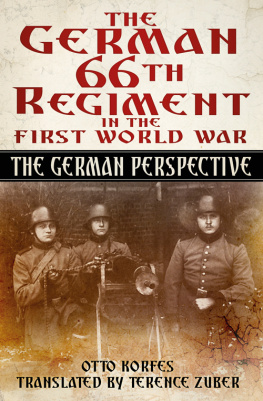
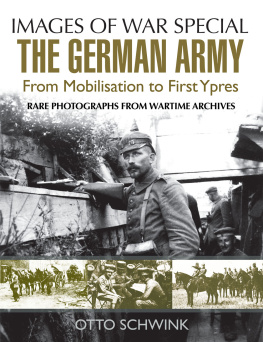
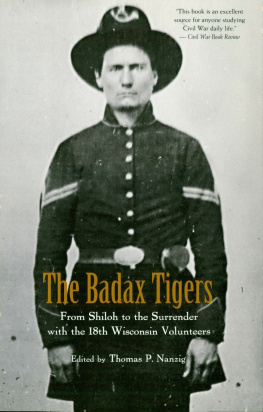
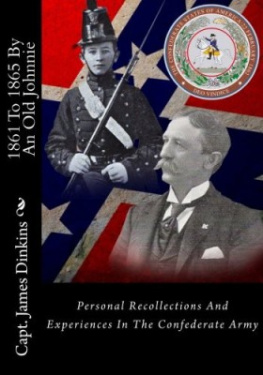
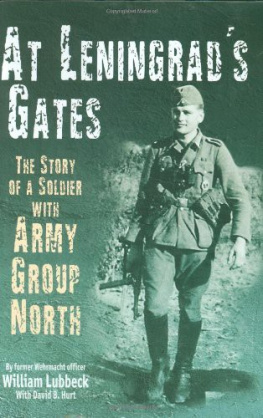
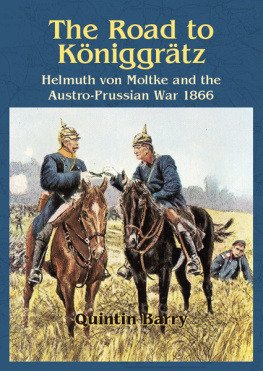





 It is not unusual for an undertaking of this magnitude to be carried out collaboratively; however, this collaboration was unusual in that two individuals, thousands of miles apart, who had both undertaken the same project independently, agreed to cooperate and combine their efforts in a joint project. This collaboration endured through nine years, two publishers, six revisions, and three moves. The editors would like to publicly thank each other for the patience and forbearance that made this possible. We are also deeply indebted to numerous individuals and organizations that provided their time, resources, and able assistance. Without their help and encouragement this project would have been an impossible task.
It is not unusual for an undertaking of this magnitude to be carried out collaboratively; however, this collaboration was unusual in that two individuals, thousands of miles apart, who had both undertaken the same project independently, agreed to cooperate and combine their efforts in a joint project. This collaboration endured through nine years, two publishers, six revisions, and three moves. The editors would like to publicly thank each other for the patience and forbearance that made this possible. We are also deeply indebted to numerous individuals and organizations that provided their time, resources, and able assistance. Without their help and encouragement this project would have been an impossible task.
 John Henry Otto was my great-grandfather. He was born September 12, 1822, in Westphalia, Germany, and enrolled in the Prussian army in the fortress of Luxembourg sometime around 1845. According to his own account he served in the war between Prussia and Denmark in 1848, and in 1849 in the suppression of the revolution in southern Germany, he fought as a sergeant under the command of Prince William of Prussia (later emperor of Germany). After the revolution he applied for admission into the Cadets College to prepare for the examination for commissioning as an officer, was accepted, and ultimately passed the examinations. After the examinations his three-year term of service expired, and he took his discharge with the rank of first lieutenant in the reserve. Shortly afterward, in 1850, Prussia declared war against Austria, Bavaria, and Hesse, and Lieutenant Otto was called into the service for another two years. Although by this time he was in command of a company, he had no desire to spend his life as a soldier, and being unable to ascertain when he would be discharged, he deserted the Prussian army. He went first to Holland, then across the North Sea to England, and finally to New York in 1853, glad, he says, to find a country where the Army is subject to the Civil Authority. He moved to Wisconsin the following year and settled in Appleton, where he engaged in the cabinetmaking business. Family tradition has it that he first met his wife when he saw her working barefoot in a field and gave her his boots.
John Henry Otto was my great-grandfather. He was born September 12, 1822, in Westphalia, Germany, and enrolled in the Prussian army in the fortress of Luxembourg sometime around 1845. According to his own account he served in the war between Prussia and Denmark in 1848, and in 1849 in the suppression of the revolution in southern Germany, he fought as a sergeant under the command of Prince William of Prussia (later emperor of Germany). After the revolution he applied for admission into the Cadets College to prepare for the examination for commissioning as an officer, was accepted, and ultimately passed the examinations. After the examinations his three-year term of service expired, and he took his discharge with the rank of first lieutenant in the reserve. Shortly afterward, in 1850, Prussia declared war against Austria, Bavaria, and Hesse, and Lieutenant Otto was called into the service for another two years. Although by this time he was in command of a company, he had no desire to spend his life as a soldier, and being unable to ascertain when he would be discharged, he deserted the Prussian army. He went first to Holland, then across the North Sea to England, and finally to New York in 1853, glad, he says, to find a country where the Army is subject to the Civil Authority. He moved to Wisconsin the following year and settled in Appleton, where he engaged in the cabinetmaking business. Family tradition has it that he first met his wife when he saw her working barefoot in a field and gave her his boots.